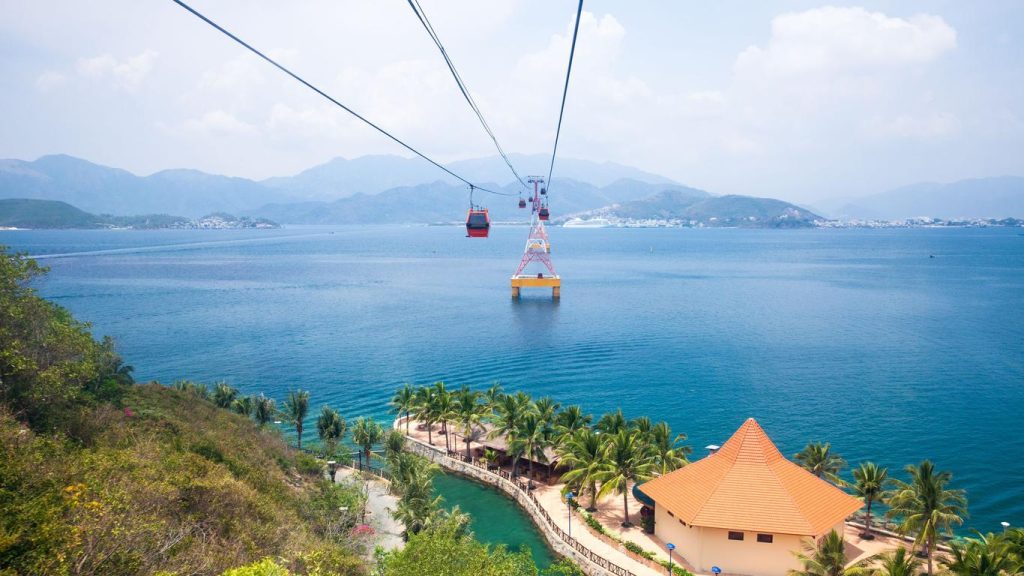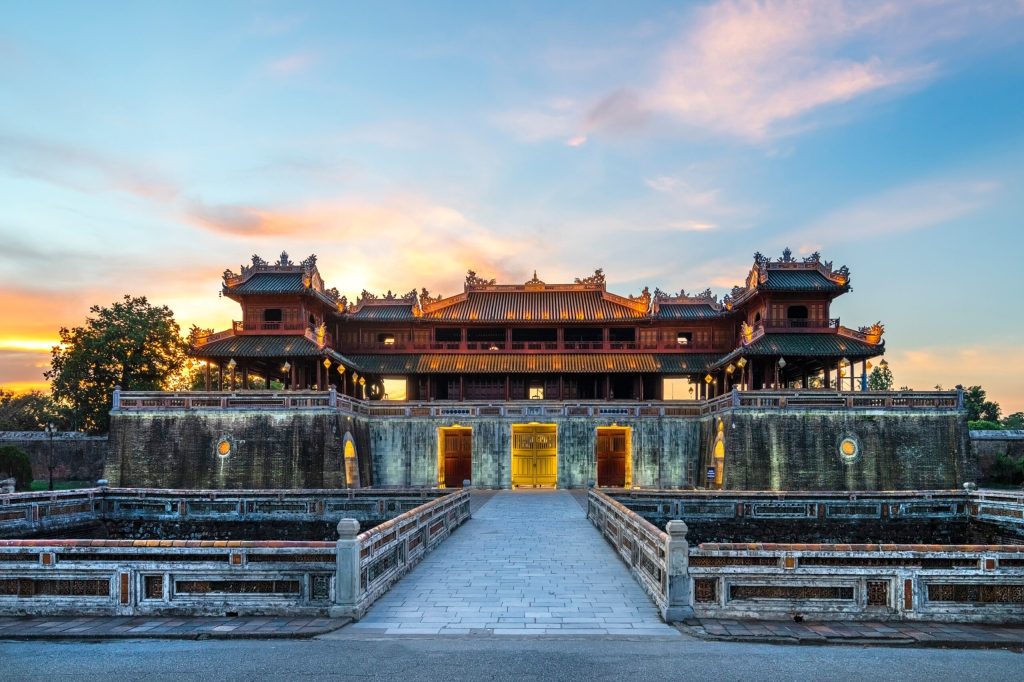Da Nang – A guide basic for the trip
Da Nang, located on Vietnam’s central coast, boasts a unique blend of natural beauty, historical significance, and modern development. Framed by sandy beaches along the South China Sea and surrounded by lush mountains, the city offers a picturesque backdrop for visitors. Its history is rich, with influences from the ancient Cham Empire evident in sites like the Museum of Cham Sculpture, showcasing intricate artifacts. During the Vietnam War, Da Nang gained strategic importance, leaving behind remnants like the Marble Mountains, a cluster of limestone hills with caves and temples.
Today, Da Nang thrives as a bustling urban center with modern infrastructure, including the iconic Dragon Bridge spanning the Han River. The city is known for its pristine My Khe Beach, often rated among the world’s best, and Ba Na Hills, a hill station offering cooler temperatures and panoramic views. Cultural diversity is evident in its cuisine, ranging from fresh seafood to local delicacies like Mi Quang and Banh Xeo. With a clean environment and a growing expatriate community drawn to its livability, Da Nang continues to charm visitors with its vibrant mix of tradition and progress.
I. When is the best time to visit Da Nang Vietnam?
The best time to visit Da Nang is typically from February to May, during the spring season, and from September to November, during the autumn season. These periods offer pleasant weather with milder temperatures and lower humidity compared to the hot and rainy summer months.
– Spring (February to May): This is considered one of the best times to visit Da Nang due to mild temperatures, clear skies, and lower humidity. It’s ideal for beach activities and outdoor sightseeing.
– Autumn (September to November): Another favorable time with comfortable temperatures and less rainfall. The sea remains warm from the summer months, making it suitable for beachgoers.
– Avoiding the Summer (June to August): Da Nang experiences hot and humid weather during the summer, with occasional heavy rainfall and the possibility of typhoons. While this period can still be enjoyable for those who don’t mind the heat, it’s generally less comfortable for outdoor activities.
– Winter (December to January): Although winter in Da Nang is mild compared to northern regions of Vietnam, it can be cooler and occasionally rainy. The water temperature also drops, which might not be ideal for swimming.
Overall, planning a visit during spring or autumn ensures a pleasant experience with favorable weather conditions for exploring Da Nang’s attractions, enjoying its beaches, and experiencing local culture comfortably.
II. What to do in Da Nang Vietnam
Da Nang offers a diverse range of activities and attractions that cater to various interests. Here are some of the top things to do in Da Nang:
- Visit My Khe Beach: Relax on the pristine sands of My Khe Beach, known for its clear waters and gentle waves, perfect for swimming and sunbathing.
- Explore Marble Mountains: Climb the Marble Mountains to visit Buddhist pagodas, explore caves filled with religious sculptures, and enjoy panoramic views of Da Nang and the coastline.
- Walk across Dragon Bridge: Witness the spectacle of the Dragon Bridge, especially at night when it lights up and sometimes breathes fire and water.
- Discover Museum of Cham Sculpture: Explore Vietnam’s largest collection of Cham artifacts, including sculptures and ceramics dating back to the 7th century.
- Take a day trip to Hoi An: Just a short drive away, Hoi An’s UNESCO-listed Ancient Town offers beautifully preserved architecture, lantern-lit streets, and a rich cultural heritage.
- Visit Ba Na Hills: Experience the cooler climate and French village atmosphere at Ba Na Hills, accessed by the world’s longest cable car ride. Don’t miss the Golden Bridge with giant hands.
- Enjoy local cuisine: Dive into Vietnamese street food at places like Han Market, try specialties like Mi Quang (turmeric noodles) and Banh Xeo (crispy pancakes), and sample fresh seafood at beachfront restaurants.
- Relax at Son Tra Peninsula: Explore the biodiversity of Son Tra Peninsula, home to the endangered red-shanked douc langur and offering scenic viewpoints like the Linh Ung Pagoda.
- Experience the nightlife: Da Nang has a vibrant nightlife scene with beach bars, rooftop lounges, and night markets offering live music, local crafts, and street food.
- Attend cultural events: Depending on the time of year, you might catch festivals or events celebrating local traditions and holidays, providing insights into Vietnamese culture.
Whether you’re interested in history, nature, cuisine, or simply relaxing on the beach, Da Nang offers a variety of experiences that cater to all preferences and ages.
III. How to get to Da Nang?
Another way to reach Da Nang, especially if you’re traveling from nearby cities or destinations within Vietnam, is by using intercity buses or private car transfers. Here’s how you can reach Da Nang using these methods:
- Intercity Buses:
– Da Nang is well-served by long-distance buses from neighboring cities like Hue (to the north) and Hoi An (to the south), as well as major cities such as Hanoi and Ho Chi Minh City.
– Most intercity buses are comfortable and offer various classes of service, including sleeper buses for overnight journeys.
- Private Car or Taxi:
– You can hire a private car or taxi for a more personalized and direct journey to Da Nang from nearby cities or towns.
– Private car transfers are available through travel agencies, hotels, or online booking platforms, providing flexibility in terms of departure times and comfort.
- Motorbike (for Adventurous Travelers):
– For adventurous travelers familiar with riding motorbikes, another way to reach Da Nang is by renting a motorbike and traveling independently.
– This option allows you to enjoy the scenic coastal roads and explore smaller towns and villages along the way.
- Cycling (for the Adventurous and Fit):
– Cyclists can also travel to Da Nang from nearby areas by bicycle, although this option requires physical fitness and careful planning due to longer travel times compared to motorized transport.
These alternative methods provide additional flexibility depending on your travel preferences, budget, and the level of adventure you seek on your journey to Da Nang. Each option offers its own unique experience, whether you prefer the comfort and convenience of buses and taxis or the freedom and adventure of motorbikes or bicycles.







